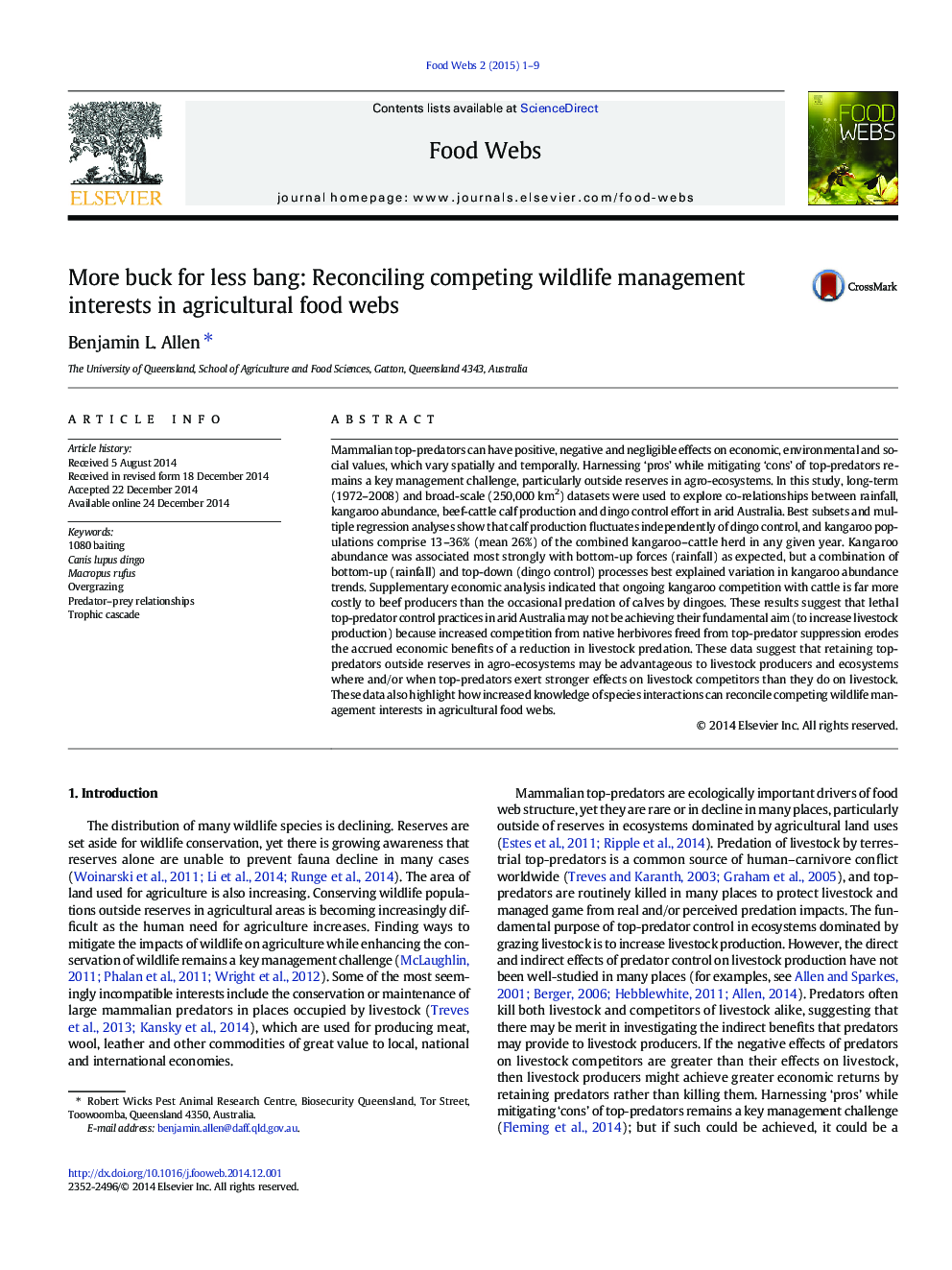| کد مقاله | کد نشریه | سال انتشار | مقاله انگلیسی | نسخه تمام متن |
|---|---|---|---|---|
| 4493284 | 1623643 | 2015 | 9 صفحه PDF | دانلود رایگان |
• Cattle production fluctuates independent of dingo control.
• Kangaroos compete with cattle for pasture, and dingoes may suppress kangaroos.
• Kangaroo population trends are best explained by both top-down and bottom-up factors.
• Conservative dingo control practices may indirectly improve cattle production.
• Ecological knowledge can reconcile competing predator management interests.
Mammalian top-predators can have positive, negative and negligible effects on economic, environmental and social values, which vary spatially and temporally. Harnessing ‘pros’ while mitigating ‘cons’ of top-predators remains a key management challenge, particularly outside reserves in agro-ecosystems. In this study, long-term (1972–2008) and broad-scale (250,000 km2) datasets were used to explore co-relationships between rainfall, kangaroo abundance, beef-cattle calf production and dingo control effort in arid Australia. Best subsets and multiple regression analyses show that calf production fluctuates independently of dingo control, and kangaroo populations comprise 13–36% (mean 26%) of the combined kangaroo–cattle herd in any given year. Kangaroo abundance was associated most strongly with bottom-up forces (rainfall) as expected, but a combination of bottom-up (rainfall) and top-down (dingo control) processes best explained variation in kangaroo abundance trends. Supplementary economic analysis indicated that ongoing kangaroo competition with cattle is far more costly to beef producers than the occasional predation of calves by dingoes. These results suggest that lethal top-predator control practices in arid Australia may not be achieving their fundamental aim (to increase livestock production) because increased competition from native herbivores freed from top-predator suppression erodes the accrued economic benefits of a reduction in livestock predation. These data suggest that retaining top-predators outside reserves in agro-ecosystems may be advantageous to livestock producers and ecosystems where and/or when top-predators exert stronger effects on livestock competitors than they do on livestock. These data also highlight how increased knowledge of species interactions can reconcile competing wildlife management interests in agricultural food webs.
Figure optionsDownload as PowerPoint slide
Journal: Food Webs - Volume 2, March 2015, Pages 1–9
